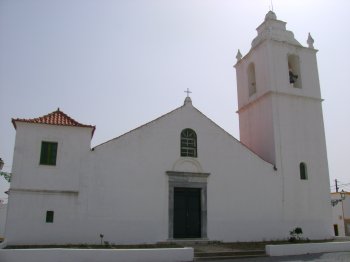Explore the best places
Monuments in Mértola
Azenhas do Guadiana
- heritage
Mértola
7750, Mértola
In the past, watermills used the Guadiana River to transform grain into flour. Today, watermills are places of leisure.
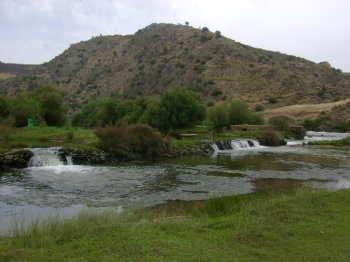
Mina de São Domingos
- heritage
Corte do Pinto
7750-102, Corte do Pinto
A mining complex established in the 19th century to exploit a copper-bearing pyrite mine whose deposit had been exploited in Roman and pre-Roman times. The main elements extracted during modern mining, between 1854 and 1966, were copper and sulfur. After the mine's closure, the equipment was dismantled and sold, leaving the landscape today marked by mining activity and acid drainage.
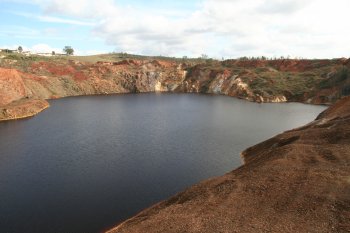
Canais do Rio Guadiana
- heritage
Mértola
7750-310, Mértola
The canals on the Guadiana River were used to capture fish. The last traps of this type are in the municipality of Mértola, which have been discontinued, diverting fish to easier-to-catch locations.
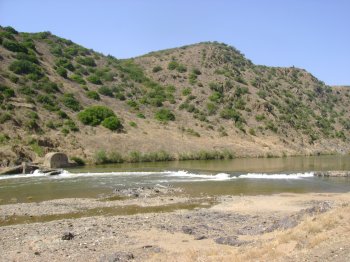
Torre do Relógio de Mértola
- heritage
Rua Dom Sancho II, 15
7750-360, Mértola
The Clock Tower was likely built in the late 16th or early 17th century, as part of the reorganization of the Praça do Município urban area. This building was erected near a group of buildings representing political, administrative, judicial, and economic power. Reusing an old city wall tower, it began to mark the boundary of Praça do Município and became one of Mértola's emblematic elements. In 1896, the original clock was replaced by a more recent one that continues to keep time in Vila Velha to this day.
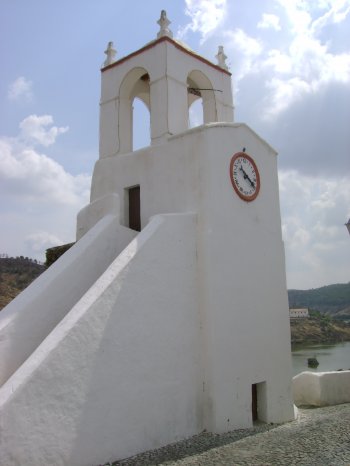
Castelo de Mértola
- heritage
Largo da Igreja
7750-338, Mértola
A castle of Romanesque and Gothic architecture, with quadrangular towers. The keep stands on the steepest slope. Of the medieval gates, only the Misericórdia Gate, overlooking the Guadiana River, remains. The old citadel, as well as important sections of the wall that enclosed the town, remain. Archaeological work in the castle's citadel has uncovered a Moorish quarter from the 12th and 13th centuries and several Roman structures from the 4th century. The Arab ceramics found are on display in the Mértola museum.
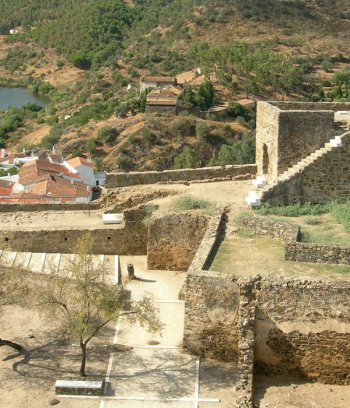
Alcáçova do Castelo de Mértola
- heritage
Mértola
7750, Mértola
On the northern slope of the Castle Hill, the possible Roman city forum creates an artificial platform, supporting the imposing monumental complex of the city of Myrtilis. This entire platform, leaning against the wall, rested on a solid underground gallery approximately 30 meters long and 6 meters high. In Late Antiquity, in the 5th and 6th centuries, lavish religious buildings were erected here; among them, a possible Episcopal Palace and a baptistery, of which significant fragments of a beautiful set of polychrome mosaics remain. During the Islamic period, during the 12th and 13th centuries, this entire area was occupied by …
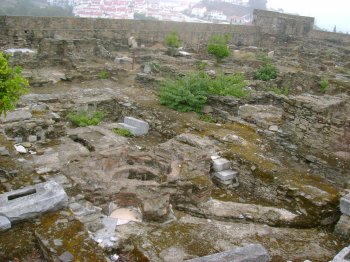
Igreja de Nossa Senhora de Entre Ambas-as-Águas / Igreja de Nossa Senhora da Assunção / Igreja Matriz de Mértola
- heritage
Largo da Igreja
7750-350, Mértola
On a steeply sloping area below the castle lies the old mosque, converted into a Christian church in the 13th century, with a Manueline-Mudejar façade featuring battlements and spires. It is the only one that still retains the volume and some decorative elements of the Arab temple that preceded it, notably the "T" layout, the presence of the mihrab and the compartment in the "qibla" (mosque wall) facing Mecca, the existence of five naves from the old mosque, the statuary, doors, and remains of the mihrab.
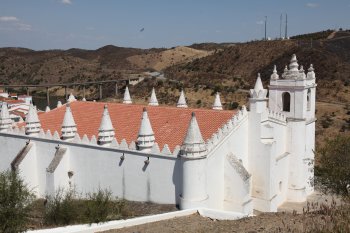
Igreja Paroquial da Nossa Senhora da Conceição de Corte do Pinto
- heritage
Largo Dom José do Patrocínio, 2
7750-102, Corte Pinto
In this church the highlight goes to the drawing and grandeur of the main portal.
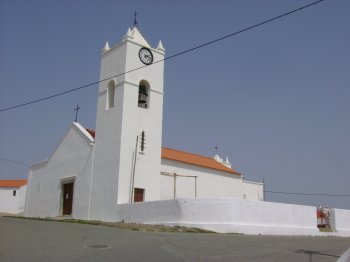
Igreja Paroquial de Espírito Santo
- heritage
Espírito Santo
7750-213, Espírito Santo
Temple with diverse influences on style and architecture as the Gothic, Manueline, Mannerist and Baroque. In the Baroque, for example, are the main altarpiece and the painting of the chancel, as well as the pulpit.
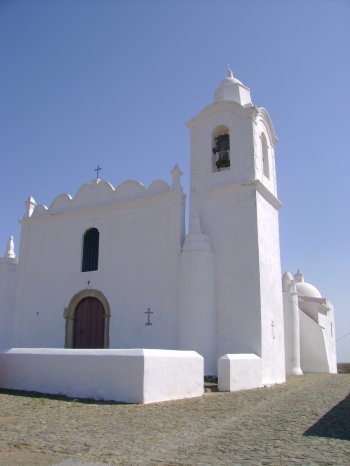
Igreja Paroquial de Santana de Cambas
- heritage
Rua Tomás António Revez
7750-413, Santana de Cambas
Church with three naves, which presents, inside, gilded and polychrome altarpieces. The main altarpiece has mural and Dome decorated by 19th century murals.
